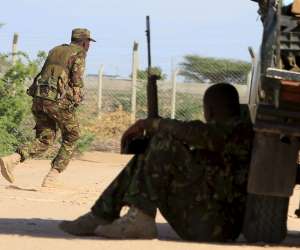April 7, 2015
LAST WEEK four gunmen from the Islamist militant group al-Shabab stormed Garissa University College in Kenya, about 100 miles from the Somali border.

April 7, 2015
LAST WEEK four gunmen from the Islamist militant group al-Shabab stormed Garissa University College in Kenya, about 100 miles from the Somali border.

In what reports detail as a highly coordinated attack, the assailants gunned down some 147 people, 142 of whom were students. The gunmen, who had explosives strapped to them, began killing indiscriminately, but as the 15-hour siege went on, they separated students by religion, murdering Christians. This terrorist attack was Kenya’s worst since the U.S. Embassy in Nairobi was bombed by al-Qaeda, killing 213, in 1998.
No words can capture the horror of such a tragedy. Once again, the world is witness to the ruthless cutting down of those who represent any country’s brightest hope: students pursuing an education. Like Boko Haram’s kidnapping of more than 200 schoolgirls nearly a year ago in Nigeria and the Taliban’s slaughter of 132 schoolchildren in Pakistan, the attack in Garissa is a gruesome reminder that children and young adults are all too often the victims of violent extremism — and that those who sacrifice to earn an education are particularly anathema to the intolerant.
Al-Shabab, the al-Qaeda-linked Somali terrorist group, claims to be targeting Kenya in retaliation for its 2011 military incursion into Somalia. In 2013, the group carried out an attack at a popular shopping mall in Nairobi, killing 63 and wounding more than 175. With the ascendancy of the Islamic State in the Middle East and the rising notoriety of Boko Haram in West Africa, al-Shabab may have been overshadowed in the media, but the group remains the biggest security threat to the East Africa region. Amina Mohamed, Kenya’s foreign minister, in a conversation with us justifiably called her nation “a frontline state in the war against terror.”
The United States has helped Kenya and other neighboring states in the fight against al-Shabab, launching a number of drone strikes that have killed al-Shabab leaders, including Ahmed Abdi Godane, the movement’s top commander, last year. On Monday, Kenyan air forces also launched strikes against al-Shabab bases in Somalia. But al-Shabab continues to carry out deadly assaults inside Somalia and beyond. The Garissa massacre again highlights the limitations of President Obama’s light-footprint counterterrorism model in weak states such as Somalia and Yemen. Such places need more help with governance and development; missile strikes and small Special Operations advisory teams alone will not deliver security.
Courtesy: Washington Post







































































































